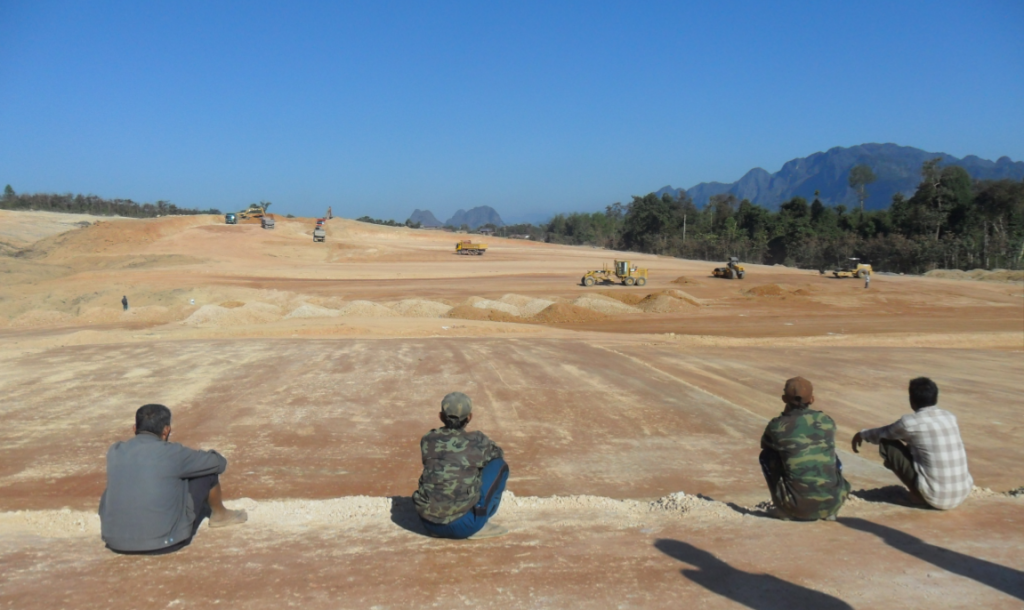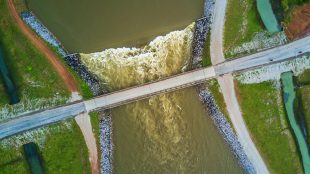Mainland Southeast Asia’s industrial and extractive booms have driven the region’s economic growth as well as significant social and environmental change. Scholars have long studied how market expansion and infrastructure development are shaping the livelihoods and environments of the region’s rural poor. Yet we are still to grasp how diverse resource developments and enclosures are interacting and accumulating within landscapes, how people are responding, and the implications for governance. Funded by an Australian Research Council Discovery Grant, this project explores the contours and implications of these connected transitions in Cambodia, Laos, Thailand and Vietnam.
Why “rupture”? We draw on Christian Lund’s work on rupture, which uses this as an analytical concept to describe sudden institutional shifts caused by dramatic and rapid processes of change such as colonisation and conflict (2016). In Lund’s schema, ruptures represent “open moments…when opportunities and risks multiply” (2016: 1202). These are moments when the status quo can shift—for example, through new material and political claims, or social actions and resistance. In these situations, processes of state making can be observed. His concept of rupture therefore draws attention to dramatic and multi-dimensional shifts that have a catalytic role in society.
We use this notion of rupture not only to describe institutional disruption, as Lund specified, but also dramatic structural reconfigurations of nature and society. Such processes are now prominent in mainland Southeast Asia’s resource frontiers. This project focuses on major hydroelectric dams as examples of large-scale infrastructure developments that dramatically reorganise landscapes, livelihoods and society. However, the rupture metaphor may equally apply to other large-scale extractive and infrastructure projects, major land enclosures, natural disasters and more. Any one of these major developments or events could—individually and in combination—produce a structural shift in nature–society relationships with transformative implications.
By framing these developments as “socio-ecological ruptures,” the project creates scope for comparative conversations about a broad suite of transformative development processes. We are particularly concerned with how developments synergise and accumulate within and across landscapes, and how this gives rise to new opportunities and risks. For example, the social and environmental effects of flooding, resettlement and labour influxes to construct a hydro-electric dam may be amplified by interactions with smallholder market intensification or land enclosures for agro-industrial development, and catalyse diverse responses.
What will the project do? Through research at dam sites in Cambodia, Laos and Vietnam, and a review of the Thai experience, the project will examine how hydro developments intersect with ongoing processes of landscape and social change, and with what implications. We approach this through three related components.
First, the project studies the contours and scope of socio-ecological rupture in mainland Southeast Asia’s frontiers. Field research will focus on the Black River of northwestern Vietnam, the Sesan tributary basin of the Mekong River in Vietnam’s Central Highlands and northeastern Cambodia, and the Areng Valley in the Cardamom Mountains of southwestern Cambodia. In Laos, the project will study developments in the Hinboun valley. This fieldwork will be complemented by desk-based reviews of similar transformations that have occurred in Thailand.
Second, the project will examine responses to the above changes and impacts, both locally, and through increasingly networked civil society groups across the region. Are there counter-movements or resistance to the disruptions and changes at the study sites? Or do we observe acquiescence, and/or mixed reactions? In what circumstances do these different responses emerge? Through interviews and network mapping, the project seeks to compile a picture of societal responses at different scales and their collective influence.
Third, we ask about the implications of rupture at different scales. In what circumstances do governments accommodate local and civil society claims, and when are these suppressed? Specifically, we are interested in what rupture processes reveal, and the questions they raise, about state formation and governance in a region that is seeing a growing shift towards forms of authoritarian rule. Interviews, media reports, institutional mapping and compilation of relevant legislative measures will address these questions.
Our analytical approach is grounded in the field of political ecology, which studies social and environmental change processes as inherently connected, political and multi-scalar. Although the project studies dams as exemplars of landscape rupture, our findings will speak more broadly to the social and political dimensions of environmental change.We want to network with practitioners and scholars working on related themes in and beyond Southeast Asia. Parallels and comparisons could be made between our research and other major investigations of anthropogenic landscape change and social responses. We are therefore keen to communicate with scholars working in related areas. Given the project’s attention to social responses and counter movements, we aim to create dialogue with activist groups working on these themes, and to share research findings with policy audiences.
The new Rupture page at New Mandala is a platform to share research insights, field observations, photo essays, and other writings. If you would like to contribute a piece based on your work, please get in touch.
 Facebook
Facebook  Twitter
Twitter  Soundcloud
Soundcloud  Youtube
Youtube  Rss
Rss 
